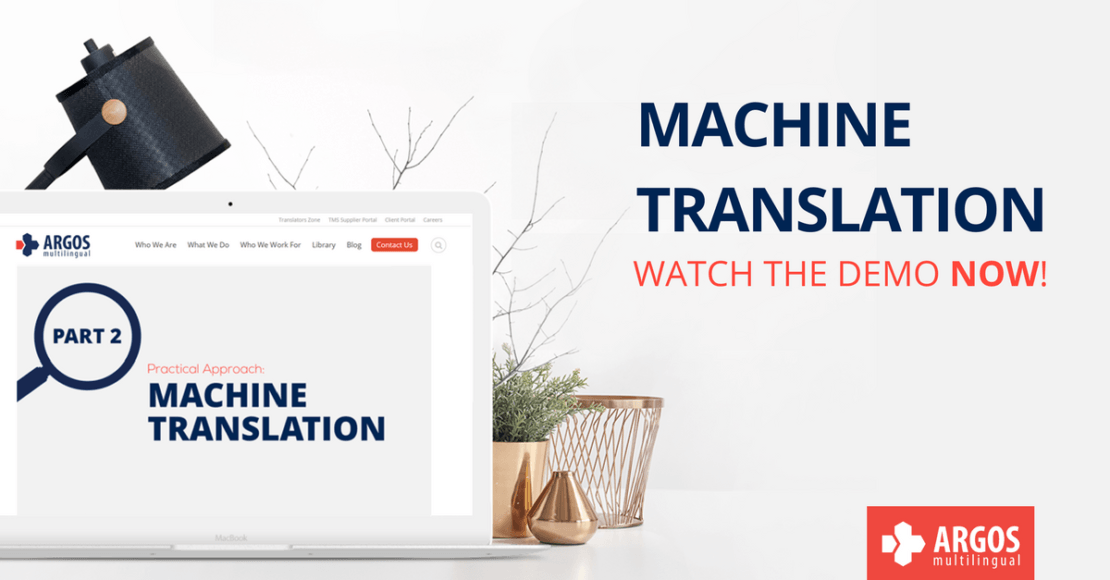A Quick Guide to Machine Translation
More and more businesses are turning to Machine Translation (MT) to complement their translation process. But how does it look like exactly and what are the benefits?
What is Machine Translation?
By definition, Machine Translation is a form of computational linguistics and language engineering which uses software to translate text or speech from one language to another. The two most common engines are Rule-Based and Statistical. These engines differ in the way they process and analyze content:
Rule-Based machine translation (RBMT) engines use linguistic rules to break down the content. It produces more predictable output for terminology and grammar, through the use of customized terminology lists to fine-tune the engine and the ability to correct every error with a targeted rule. Rule-based engines do not require bilingual corpus also known as large and structured set of texts to create a translation system.
Statistical machine translation (SMT) uses statistical models to generate the translation of the source content. This engine does not analyze texts based on language rules. This model is built by analyzing bilingual corpus, and requires an appropriate volume of bilingual content in order to do so.
As each engine processes and generates data differently, the engine chosen for a project depends on the target languages and the availability of reference materials for the given source files.
Machine Translation works best with content that is repetitive and simple where the same words are being reused and synonyms are minimized. To achieve this, we recommend applying controlled English guidelines when authoring content. You can expect significantly higher productivity gains by controlling the source language through ensuring better structured sentences which are shorter and less complex and by creating glossary or terminology lists that are clearly defined before the translation process is initiated.
Furthermore, by authoring in content management systems you are able to save high quality translated content and reuse it for future projects. Having this system in place you can reduce translations costs and increase consistency across projects. These Quality at Source steps result in better quality raw MT output and thus in turn higher post-editing productivity.
Neural Machine Translations
Machine Translation is evolving and the new type of MT, called Neural Machine Translation, is a hot topic nowadays. Since about 2013, internet giants like Google and Microsoft began to explore the possibility of using neural networks. Neural networks are statistical learning models that were first used in speech and image recognition technology. Its application in Machine Translation enables engines to train themselves using a process which is similar to the way a human brain works – through trial and error.
This process is called “deep learning”, and comes from the principles which have been established through the implementation of Big Data analytics.
While it is still early to assess the future impact and potential of this approach, it is already clear that it improves the translation in most cases, offering an output that looks more fluid and more human.
Applying Machine Translation can bring many benefits to your next translation project:
Increase your productivity
Machine Translation can increase your productivity by translating greater volumes of content. On average machine translations produce 8,000 translated words per day including 8 hours of post-editor work in comparison to 2,500 translated words with human-translation.
Reduce your translation costs
Achieve greater savings with lower rates in comparison to the rates of human-translators. Costs can be further reduced by leveraging off Translation Memories and only translating new segments. In the long term, all your future projects from the same subject-area will leverage off the savings achieved by applying Machine Translation.
Reduce time-to-market
By translating more content and at quicker rates, Machine Translation also helps to reduce your time-to-market allowing you to translate more words per day and in turn delivery translated content to your customers even faster.
Improve terminology consistency
Another benefit of Machine Translation is its ability to increase the consistency of terminology. This is especially significant for larger projects as it is easier to control the terminology used. Large projects completed by human-translators would require the use of multiple translators simultaneously translating the content where achieving the same tone and control of terminology is more challenging than with Machine Translation.
Machine Translation is one of Argos Multilingual‘s most important Machine Learning Services. At Argos, we share best practices in content creation with our clients to improve the quality of their source content and in turn increase the probability of developing a more effective Machine Translation engine. If you are interested in finding out more about Machine Translation, feel free to Contact Us or to watch the Demo on Machine Translation!





